How to Make Your Backyard Bird-Friendly While Keeping Cats Happy
Birds, Blooms & Purring Companions
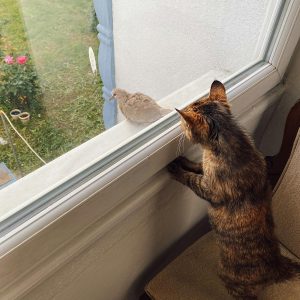 There’s something special about a backyard alive with birds chirping, the flutter of wings, and the soft swish of a cat’s tail as they watch the action unfold. For nature lovers with feline companions, the dream is a backyard that welcomes birds while keeping cats safely and happily occupied.
There’s something special about a backyard alive with birds chirping, the flutter of wings, and the soft swish of a cat’s tail as they watch the action unfold. For nature lovers with feline companions, the dream is a backyard that welcomes birds while keeping cats safely and happily occupied.
With thoughtful planning, your outdoor space can become a vibrant, shared habitat where birds thrive, and cats stay content.
Grow It and They Will Come: Plants Birds Love in Ashland
Native plants are the backbone of any bird-friendly garden. They provide natural food sources, nesting material, and shelter; plus, they’re beautifully adapted to Southern Oregon’s climate. In Ashland, hardy native plants offer year-round support for feathered visitors.
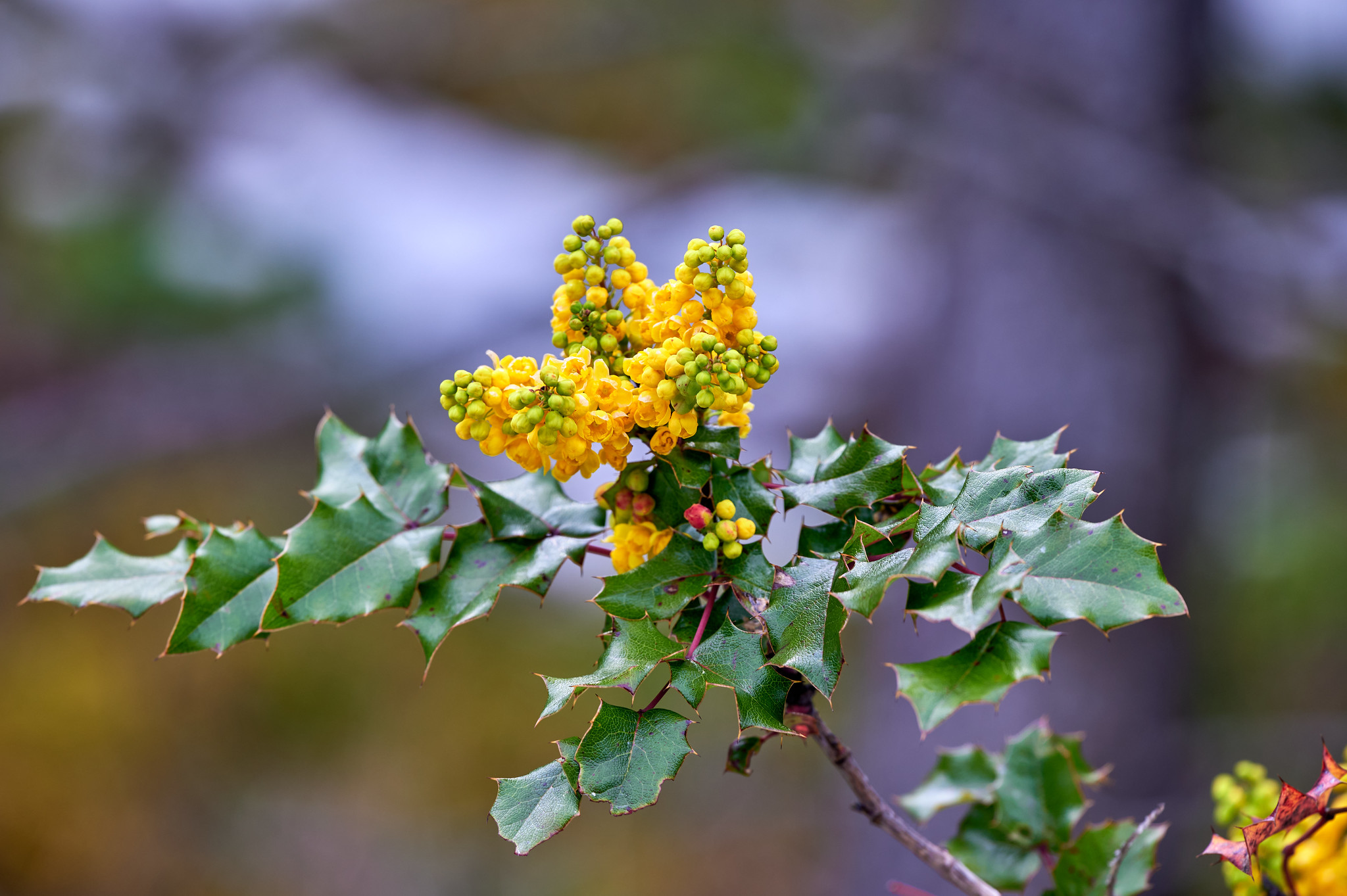
Bird-attracting favorites include:
- Serviceberry: A small tree or shrub with spring flowers, summer berries, and colorful fall foliage.
- Red-Flowering Currant: Hummingbirds adore its bright pink blossoms in early spring.
- Oregon Grape: This evergreen shrub features nectar-rich flowers and deep blue berries that birds adore.
- Snowberry: Snowberry is helpful to pollinators as a host and a food source. The flowers attract Anna’s and rufous hummingbirds, and several birds have been observed eating the berries, such as towhees, thrushes, robins, grosbeaks, and waxwings. Birds also use snowberry thickets for cover.
- Showy Milkweed: Excellent for pollinators and birds that snack on the insects it attracts.
Planting with seasonal variation in mind—flowers in spring, berries in summer and fall, and seedheads through winter—keeps birds coming year-round.
The More Layers, the More Birdy Your Yard Becomes
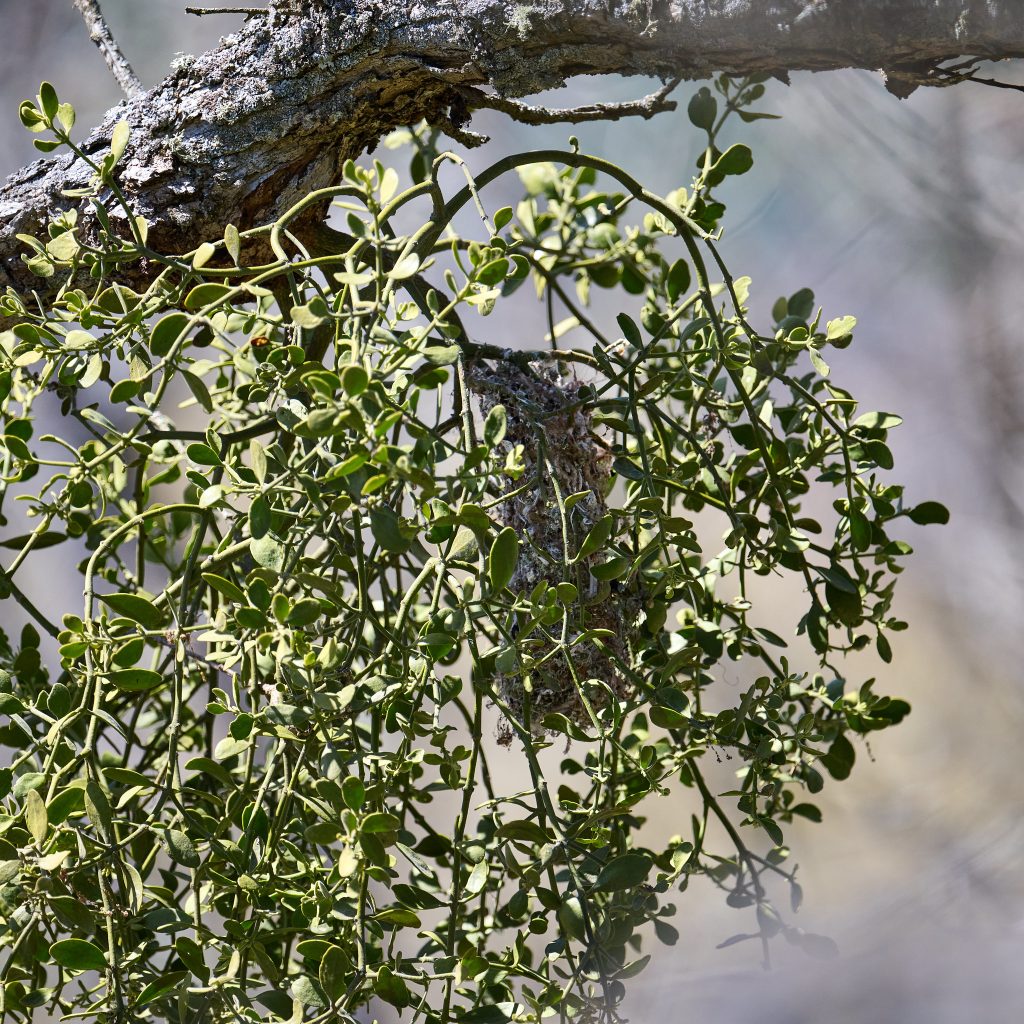
Birds thrive in layered landscapes that consist of tall trees, mid-sized shrubs, and ground covers that mimic wild habitats.
- Tall trees (like oaks or conifers) offer perching, nesting, and lookout spots.
- Mid-level shrubs provide dense cover for safety and feeding.
- Ground covers provide support and shelter for foraging and sheltering shy species like towhees.
Adding logs or rock piles to your landscape draws in insects, which in turn provide a vital food source for birds. These natural features also create shelter for ground-foraging birds such as robins and thrushes.
Bath Time: Why Birds Love a Little Splash Zone
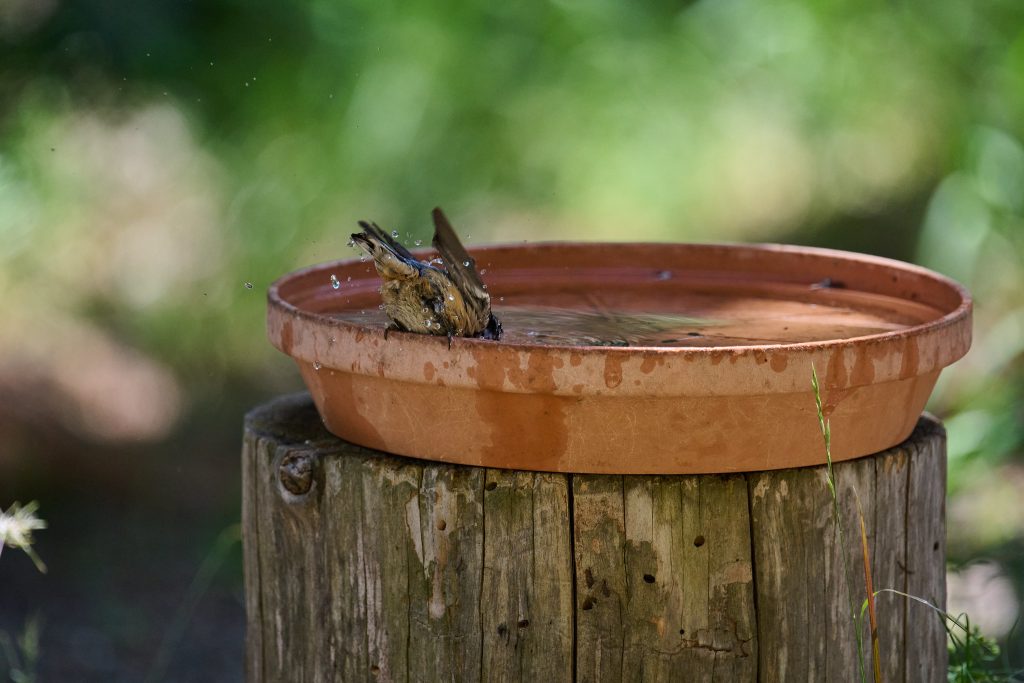
Water is essential for birds, especially in Ashland’s drier months. Adding a bird bath, shallow pond, or fun flowing fountain invites birds to drink, bathe, and play.
Tips for a successful bird splash zone:
- Keep the water shallow (1–2 inches) with sloped edges.
- Add pebbles or stones for perching.
- Place baths in open areas with nearby shrubs for quick escape routes.
- Clean and refill frequently to prevent algae and mosquito larvae.
To keep both birds and cats safe, avoid placing water features right next to bushes where predators might hide.
Feeding Birds Without Feeding the Squirrels (or Cats!)
Feeding stations are a fun way to support local birds and watch them up close. But a thoughtful setup is key.
- Tube feeders deter squirrels and larger birds.
- Suet feeders are great in winter and attract insect-eaters like woodpeckers.
- Platform feeders provide a stage for jays and doves, but place them high and far from accessible areas.
Choose black oil sunflower seeds and thistle seeds to attract a range of native birds. And don’t forget: Clean feeders every couple of weeks to prevent disease.
Purrfect Balance: Let Your Cat Enjoy the Outdoors Without Endangering Wildlife
We love our cats, but free-roaming cats are a major threat to bird populations. They’re also at risk themselves from traffic, predators, and disease. Cats can enjoy the outdoors without harming wildlife.
Try:
- Leash walks or harness time in the backyard.
- Window perches for indoor bird-watching.
The Ultimate Win-Win: A Catio!
When it comes to giving your cat safe outdoor access while keeping birds out of harm’s way, nothing beats a catio —a secure, enclosed outdoor space designed specifically for cats. It’s the best of both worlds: cats get fresh air, sunshine, and mental stimulation, while birds stay safe from surprise pounces.
 Now, the big question is: DIY or Hire a Professional?
Now, the big question is: DIY or Hire a Professional?
- DIY Catios
If you’re handy with tools and enjoy weekend projects, a DIY catio can be a fun and budget-friendly way to create an outdoor haven for your cat. From simple window box enclosures to freestanding jungle gyms, there are plenty of tutorials and kits available online to get you started.
Pros:
- Budget-friendly
- Customizable
- Great for small spaces
Considerations:
- Requires time, tools, and construction confidence
- May need extra planning to blend with your landscape or home style
2. Professionally Built Catios
If building isn’t your thing—or you want something more permanent and polished—a professional catio builder can bring your dream design to life. You can utilize companies that specialize in crafting custom catios that are safe, stylish, and built to last.

Pros:
- Expert craftsmanship and materials
- Fully customized design
- Built to meet local weather and safety needs
Considerations:
- Higher cost (but often worth it for long-term durability and design)
Whether you build it yourself or hire the pros, a well-placed catio can blend in beautifully with a bird-friendly yard. Just be sure to position it near, but not directly in, high-traffic bird zones, as cats love watching, but birds need a little breathing room.
Harmony in Your Habitat
To tie it all together, a few final touches will boost your yard’s ecosystem power:
- Avoid pesticides and herbicides as they harm birds and the insects they eat.
- Reduce lawn space and replace it with native plants or ground cover.
- Keep outdoor lights low or motion-activated to minimize disruption to nocturnal migration.
With a bit of planning, your backyard can be a vibrant, safe, and beautiful space where birds thrive, cats stay happy, and you get to enjoy the best of both worlds.
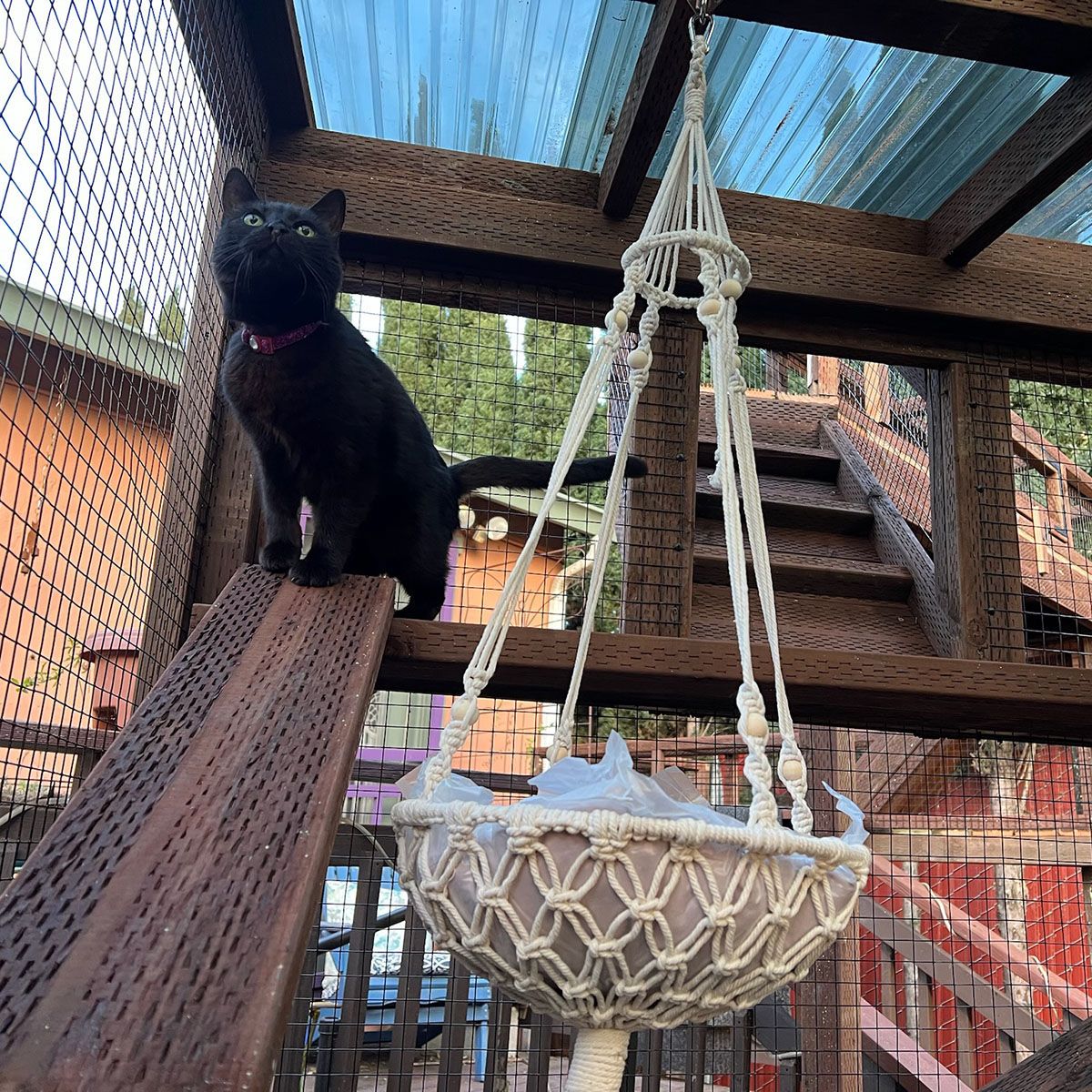
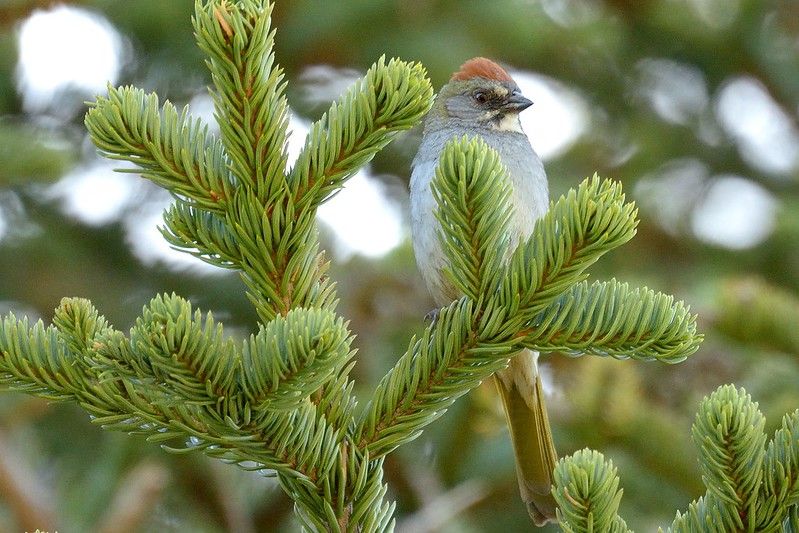
 Whether you’re a newcomer to the region or an old-timer, participate in a fun and information-filled auto tour led by historian/author Jeff LaLande and noted birders Frank Lospalluto (a KBO consultant) and Stacy Taeuber (a KBO Board member).
Whether you’re a newcomer to the region or an old-timer, participate in a fun and information-filled auto tour led by historian/author Jeff LaLande and noted birders Frank Lospalluto (a KBO consultant) and Stacy Taeuber (a KBO Board member).










 We are thrilled that Klamath Bird Observatory is in the running for the Change for Good program at the Ashland Co-op. Each year, the Ashland Co-op selects nonprofits for their owners to vote on for the Change for Good program. This program allows customers to round up their change at the cash register for that month’s nonprofits. The last time KBO was selected for this program, we received over $7,000. Ashland Co-op owners can vote from May 21 to June 9, 2025. Owners will receive an email from Ashland Co-op with a link to vote.
We are thrilled that Klamath Bird Observatory is in the running for the Change for Good program at the Ashland Co-op. Each year, the Ashland Co-op selects nonprofits for their owners to vote on for the Change for Good program. This program allows customers to round up their change at the cash register for that month’s nonprofits. The last time KBO was selected for this program, we received over $7,000. Ashland Co-op owners can vote from May 21 to June 9, 2025. Owners will receive an email from Ashland Co-op with a link to vote.
 Join us for Harry Fuller’s “Oaks and Other Creatures” presentation on May 12th from 5:30 p.m. to 7:30 p.m. The presentation will be hosted at the KBO office in Ashland, and there is a virtual option. Register below.
Join us for Harry Fuller’s “Oaks and Other Creatures” presentation on May 12th from 5:30 p.m. to 7:30 p.m. The presentation will be hosted at the KBO office in Ashland, and there is a virtual option. Register below.
 Oregon’s skies just got a little darker—and that’s great news for birds.
Oregon’s skies just got a little darker—and that’s great news for birds.